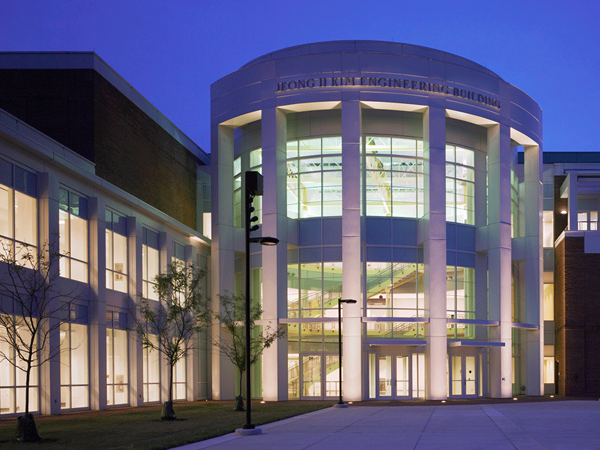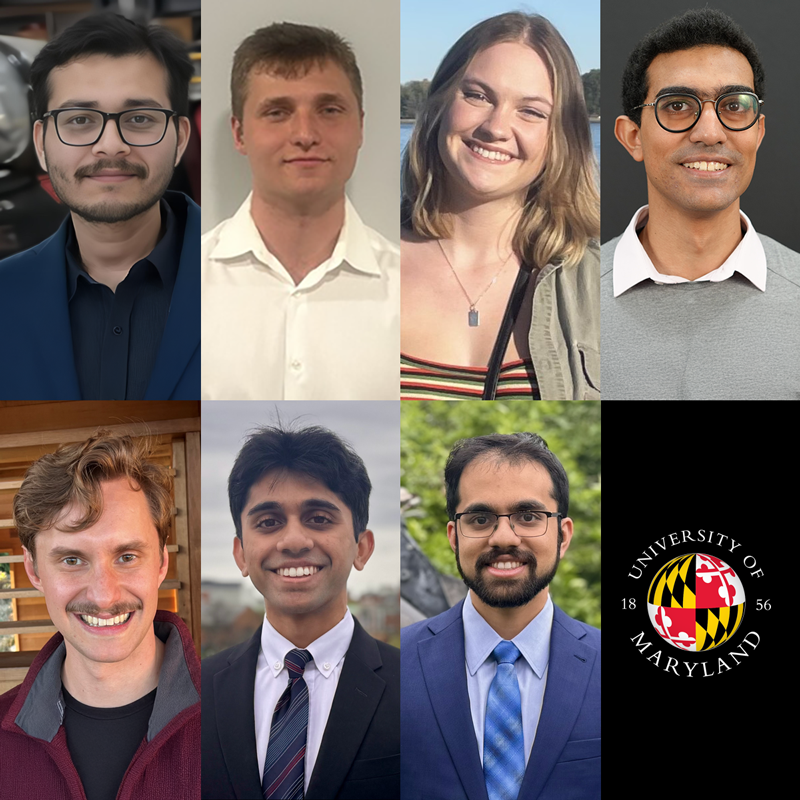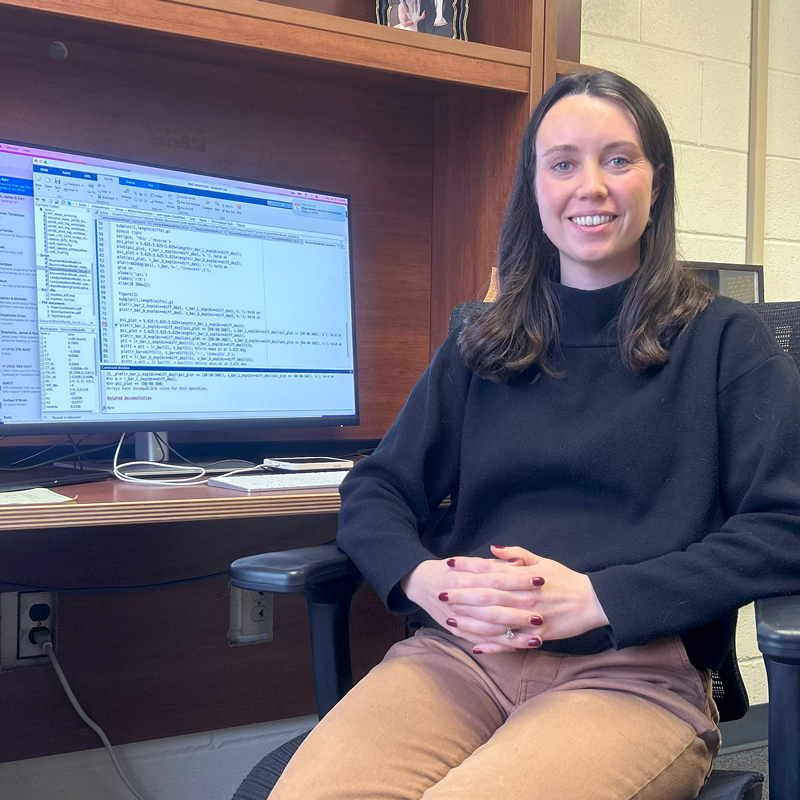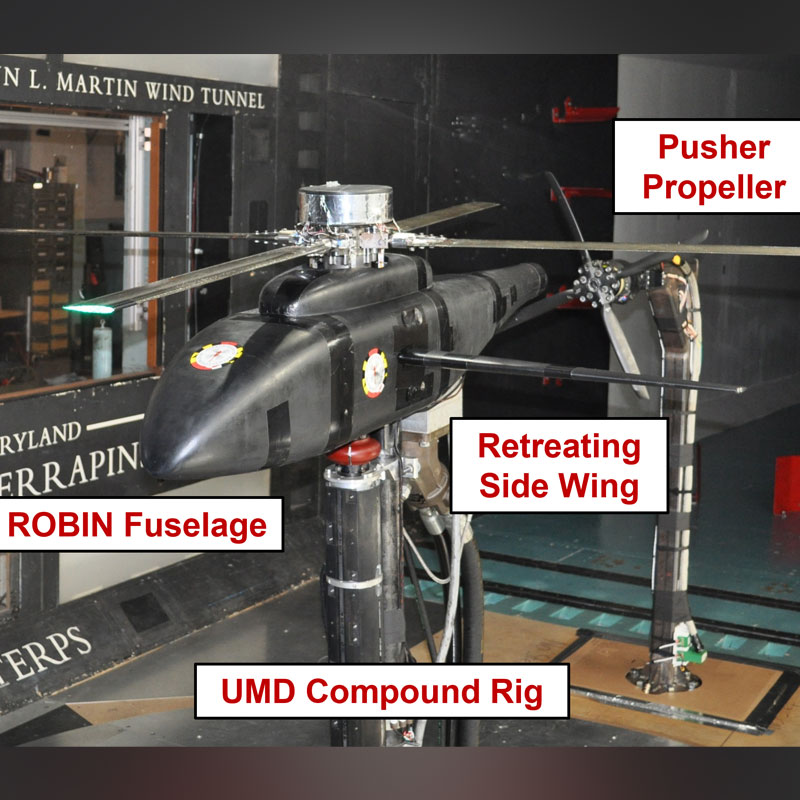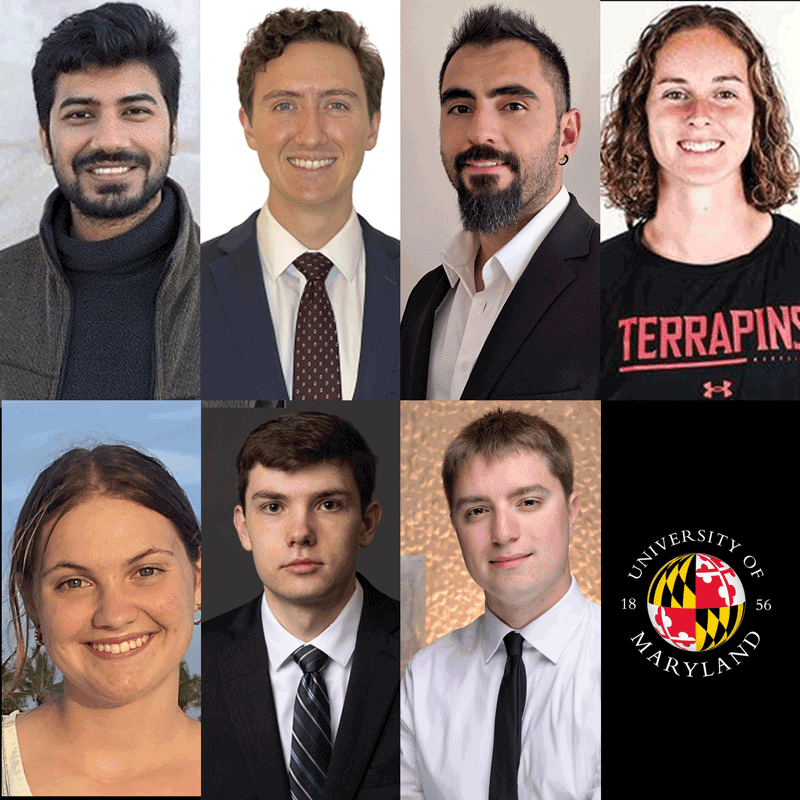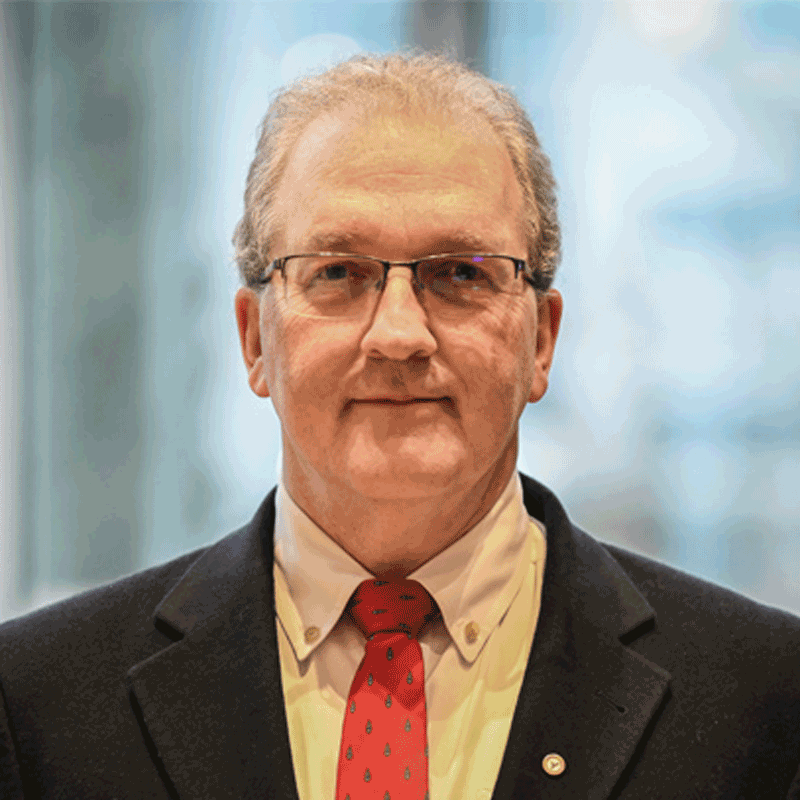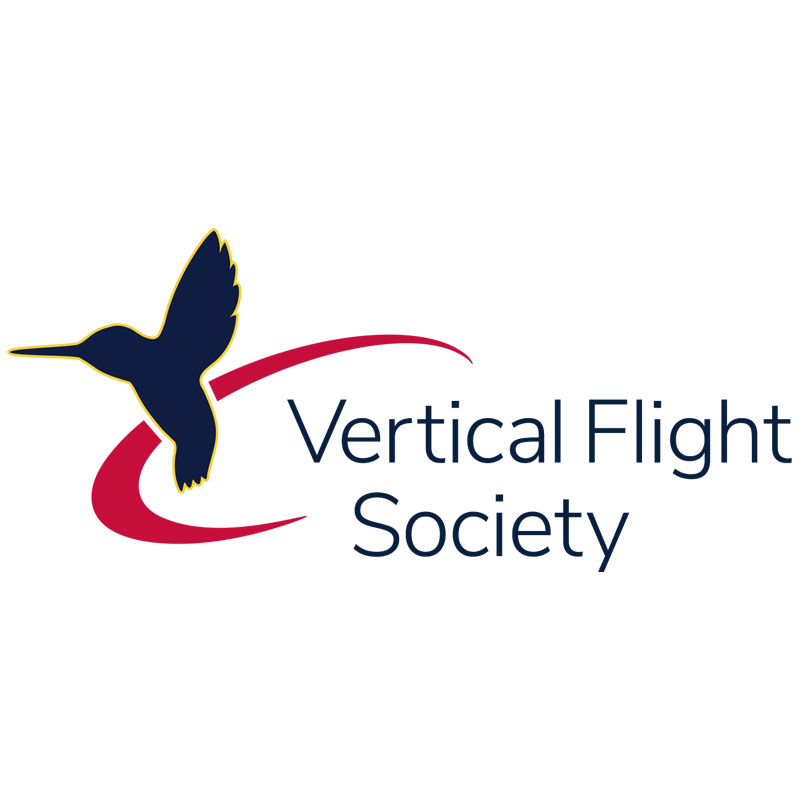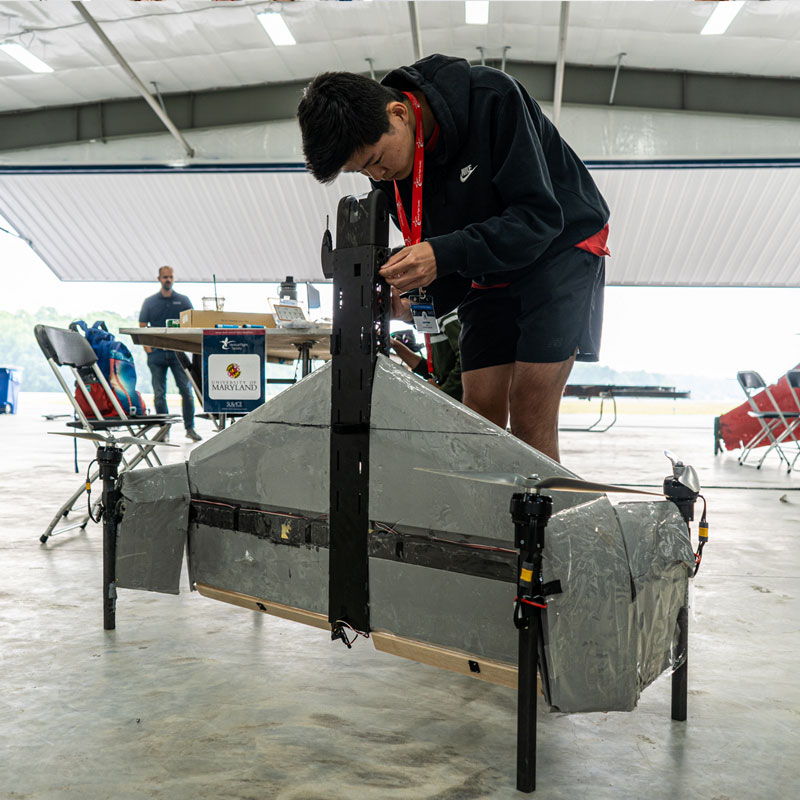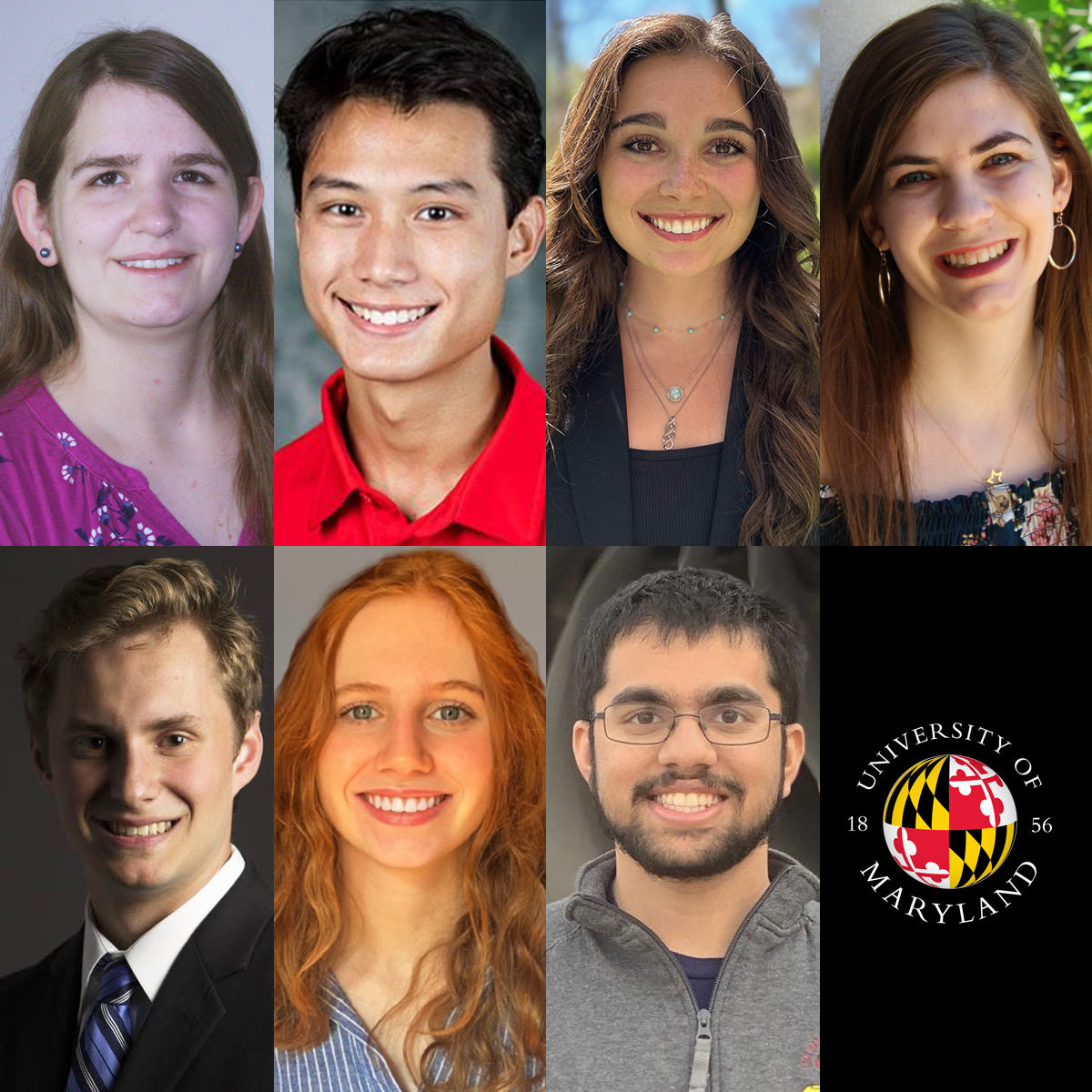News Story
Xavier Delgado Lands AIAA Best Paper Award
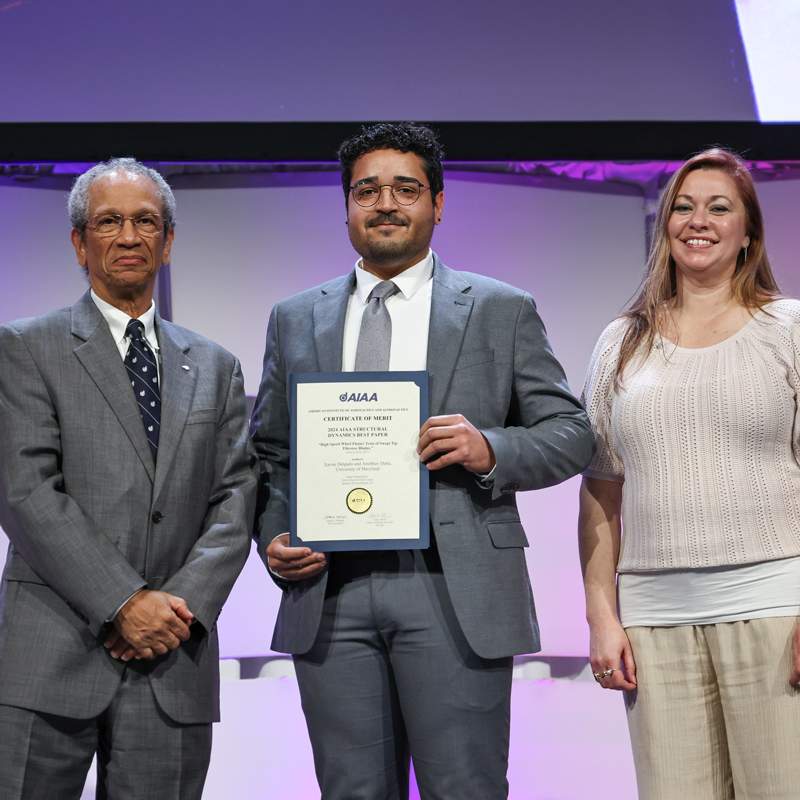
Ph.D. student Xavier Delgado (center) receiving the AIAA Best Paper in Structural Dynamics from AIAA President Daniel Hastings (right) and Director of Aerospace Design and Structures Dawn Phillips (left) at 2025 SciTech Forum for his paper "High Speed Whirl Flutter Tests of Swept-tip Tiltrotor Blades."
University of Maryland (UMD) aerospace engineering Ph.D. student Xavier Delgado landed a best paper award during the American Institute of Aeronautics and Astronautics (AIAA) 2025 SciTech Forum held in January. Submitted in 2024, Delgado’s paper “High Speed Whirl Flutter Tests of Swept-tip Tiltrotor Blades,” was recognized with AIAA’s Best Paper in Structural Dynamics.
Delgado’s research focuses on the phenomenon of whirl flutter, a limiting instability for vertical take off and landing (VTOL) vehicles.
“Tiltrotors have large spinning rotors, like giant propellers, attached to their wings,” explained Delgado. “Whirl flutter happens when a small vibration in the rotor causes the wing to vibrate, which then makes the rotor vibrate even more.”
He goes on to explain that this phenomenon typically occurs at high speeds, and is particularly dangerous because it can happen suddenly, and without warning. It can even lead to the aircraft breaking apart.
Current tiltrotor aircraft, like the V-22 Osprey and V-280, can only reach around 280 knots of cruise speed, but if engineers could limit the effects of whirl flutter, those speeds could be greatly enhanced.
“That's also why it is so important to test this in a controlled environment like UMD’s Glenn L. Martin Wind Tunnel,” said Delgado. “There is no safe way to test this on an actual tiltrotor.”
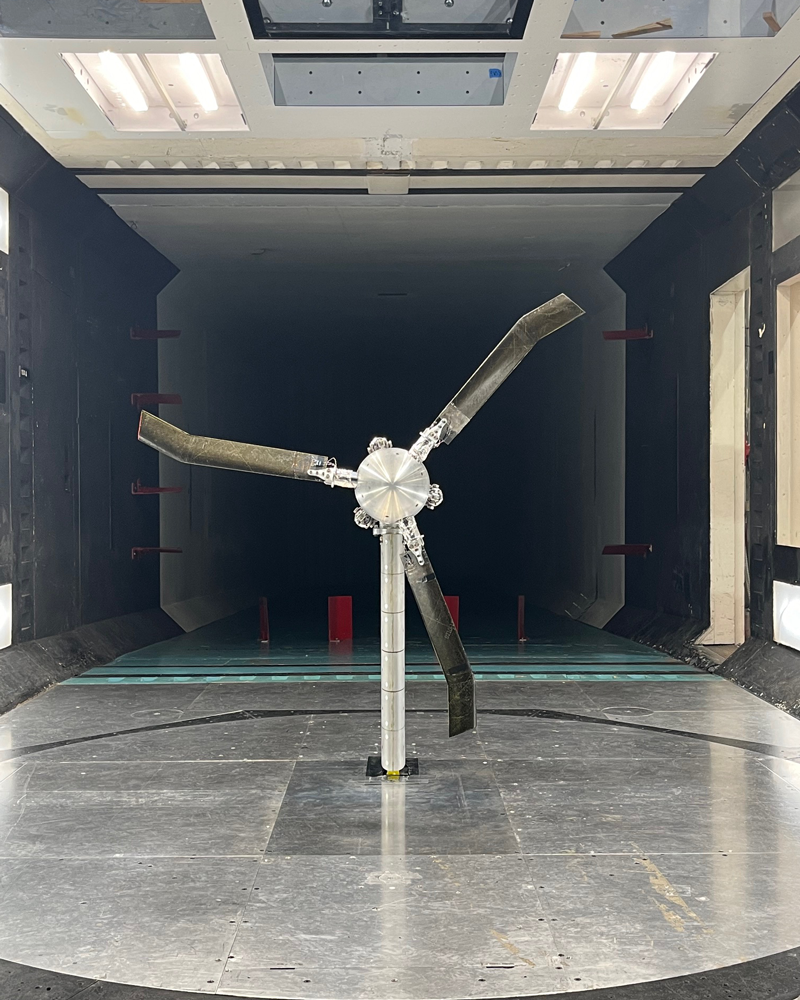 To understand those aerodynamic and stability characteristics, Delgado built a scaled model of swept-tip tiltrotor blades (pictured at right) and subjected it to speeds of 200 knots in the tunnel.
To understand those aerodynamic and stability characteristics, Delgado built a scaled model of swept-tip tiltrotor blades (pictured at right) and subjected it to speeds of 200 knots in the tunnel.
“These speeds are unprecedented, and this is equivalent to about 450 knots in full-scale,” added Professor Anubhav Datta, Delgado’s faculty advisor and co-director of Maryland’s Alfred Gessow Rotorcraft Center.
Delgado’s research aims to solve this complex problem, and the collected data will be used to validate and improve existing predictive models for whirl flutter, ultimately leading to flight speed increases for tiltrotor aircraft.
Currently a fourth-year Ph.D. student, he earned his M.S. from the University of Illinois, Urbana-Champaign ('21) and his B.S. from Clarkson University ('20). He is also a student member of the Vertical Flight Society’s Federal City Chapter, and has mentored high school and undergraduate students, which he says sparked his passion for guiding and supporting aspiring engineers.
After graduating from Maryland, Delgado aims to continue his work on tiltrotors by pursuing a career in the aerospace industry as a structural dynamicist or research engineer, while continuing his role as a mentor.
“Receiving this award underscores the importance of hard work and dedication, and it highlights the opportunities that arise when individuals are given the support and resources they need to succeed. It really speaks to the potential we all have when we're given the chance to grow and contribute.
Published February 24, 2025
